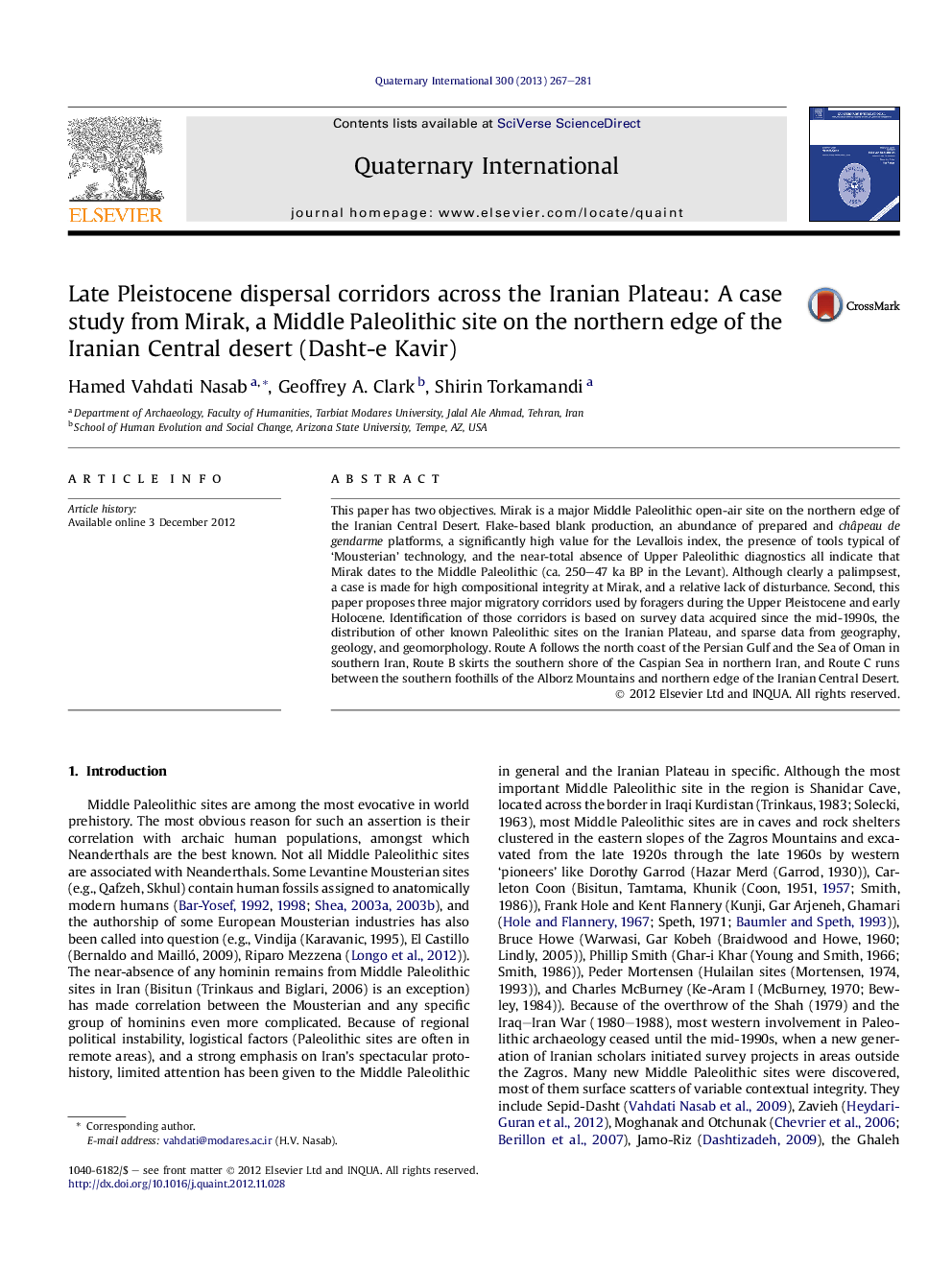| کد مقاله | کد نشریه | سال انتشار | مقاله انگلیسی | نسخه تمام متن |
|---|---|---|---|---|
| 7452689 | 1484189 | 2013 | 15 صفحه PDF | دانلود رایگان |
عنوان انگلیسی مقاله ISI
Late Pleistocene dispersal corridors across the Iranian Plateau: A case study from Mirak, a Middle Paleolithic site on the northern edge of the Iranian Central desert (Dasht-e Kavir)
ترجمه فارسی عنوان
گودال های پراکنده در اواخر پلاتفرم ایرانی: مطالعه موردی از میراک، یک سایت پالئولیوم میانی در لبه شمالی صحرای مرکزی ایران (دشت کاویر)
دانلود مقاله + سفارش ترجمه
دانلود مقاله ISI انگلیسی
رایگان برای ایرانیان
موضوعات مرتبط
مهندسی و علوم پایه
علوم زمین و سیارات
زمین شناسی
چکیده انگلیسی
This paper has two objectives. Mirak is a major Middle Paleolithic open-air site on the northern edge of the Iranian Central Desert. Flake-based blank production, an abundance of prepared and châpeau de gendarme platforms, a significantly high value for the Levallois index, the presence of tools typical of 'Mousterian' technology, and the near-total absence of Upper Paleolithic diagnostics all indicate that Mirak dates to the Middle Paleolithic (ca. 250-47 ka BP in the Levant). Although clearly a palimpsest, a case is made for high compositional integrity at Mirak, and a relative lack of disturbance. Second, this paper proposes three major migratory corridors used by foragers during the Upper Pleistocene and early Holocene. Identification of those corridors is based on survey data acquired since the mid-1990s, the distribution of other known Paleolithic sites on the Iranian Plateau, and sparse data from geography, geology, and geomorphology. Route A follows the north coast of the Persian Gulf and the Sea of Oman in southern Iran, Route B skirts the southern shore of the Caspian Sea in northern Iran, and Route C runs between the southern foothills of the Alborz Mountains and northern edge of the Iranian Central Desert.
ناشر
Database: Elsevier - ScienceDirect (ساینس دایرکت)
Journal: Quaternary International - Volume 300, 25 June 2013, Pages 267-281
Journal: Quaternary International - Volume 300, 25 June 2013, Pages 267-281
نویسندگان
Hamed Vahdati Nasab, Geoffrey A. Clark, Shirin Torkamandi,
